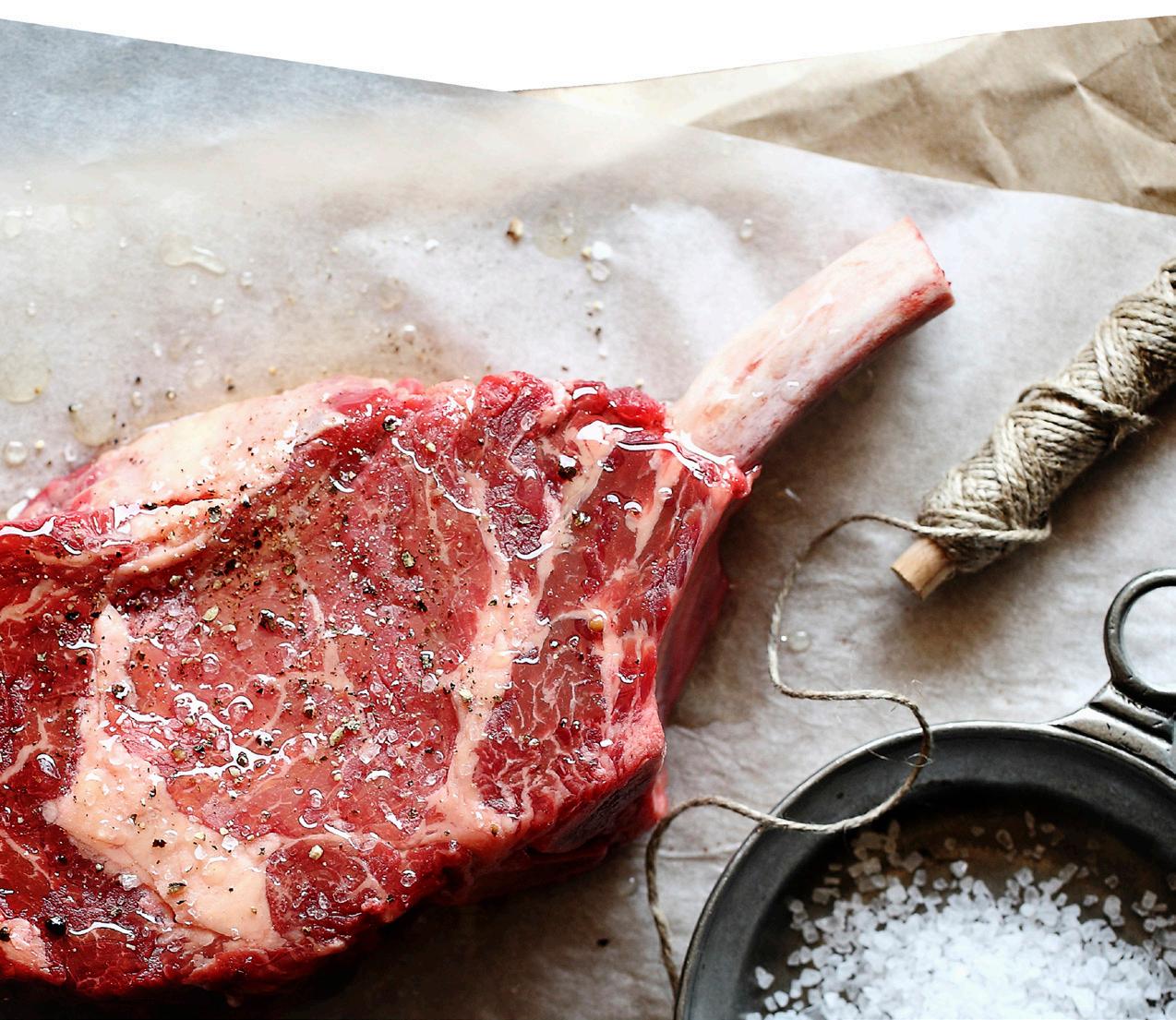

YEARLING BULL SALE
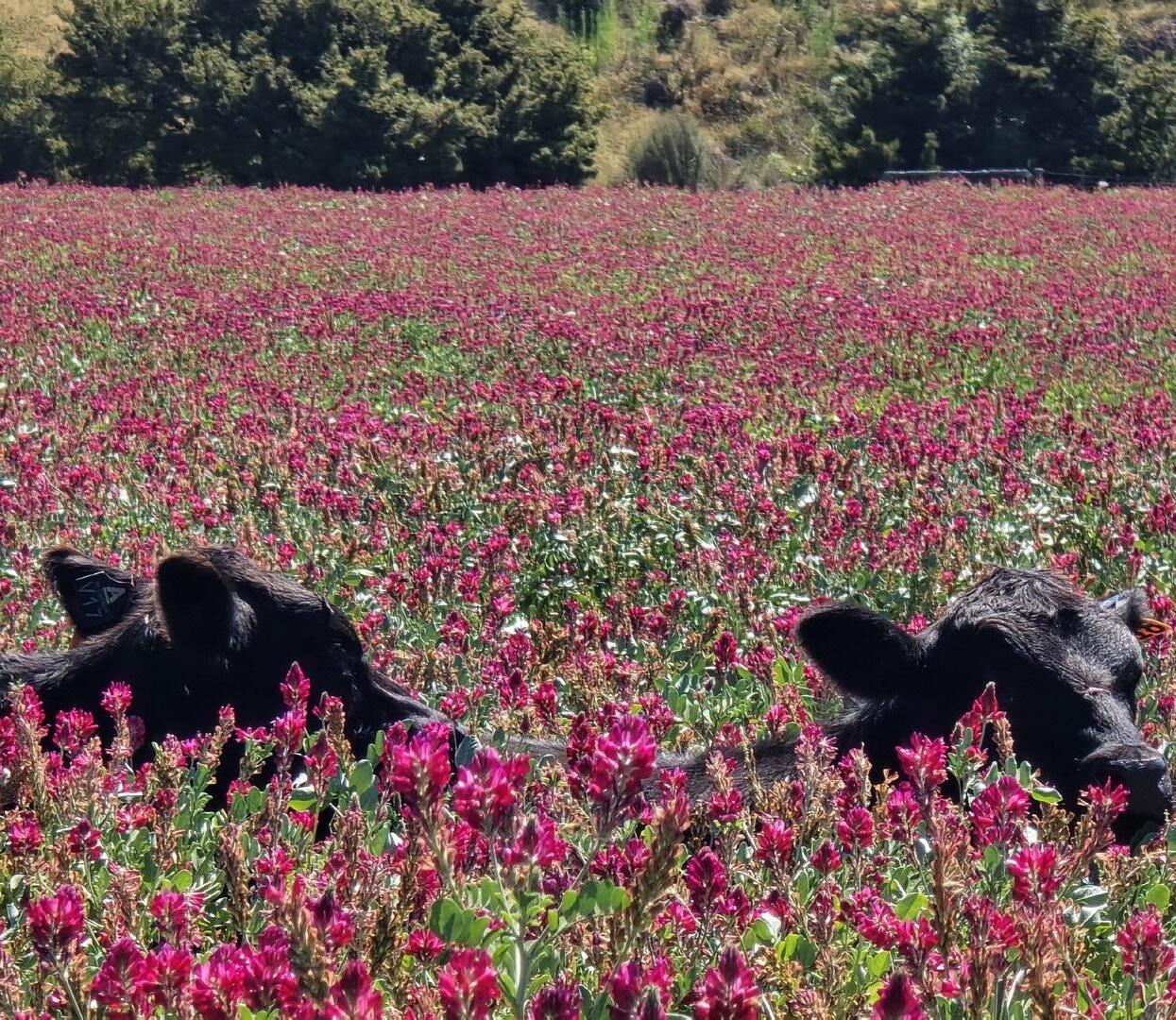

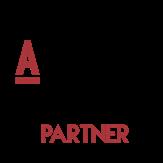
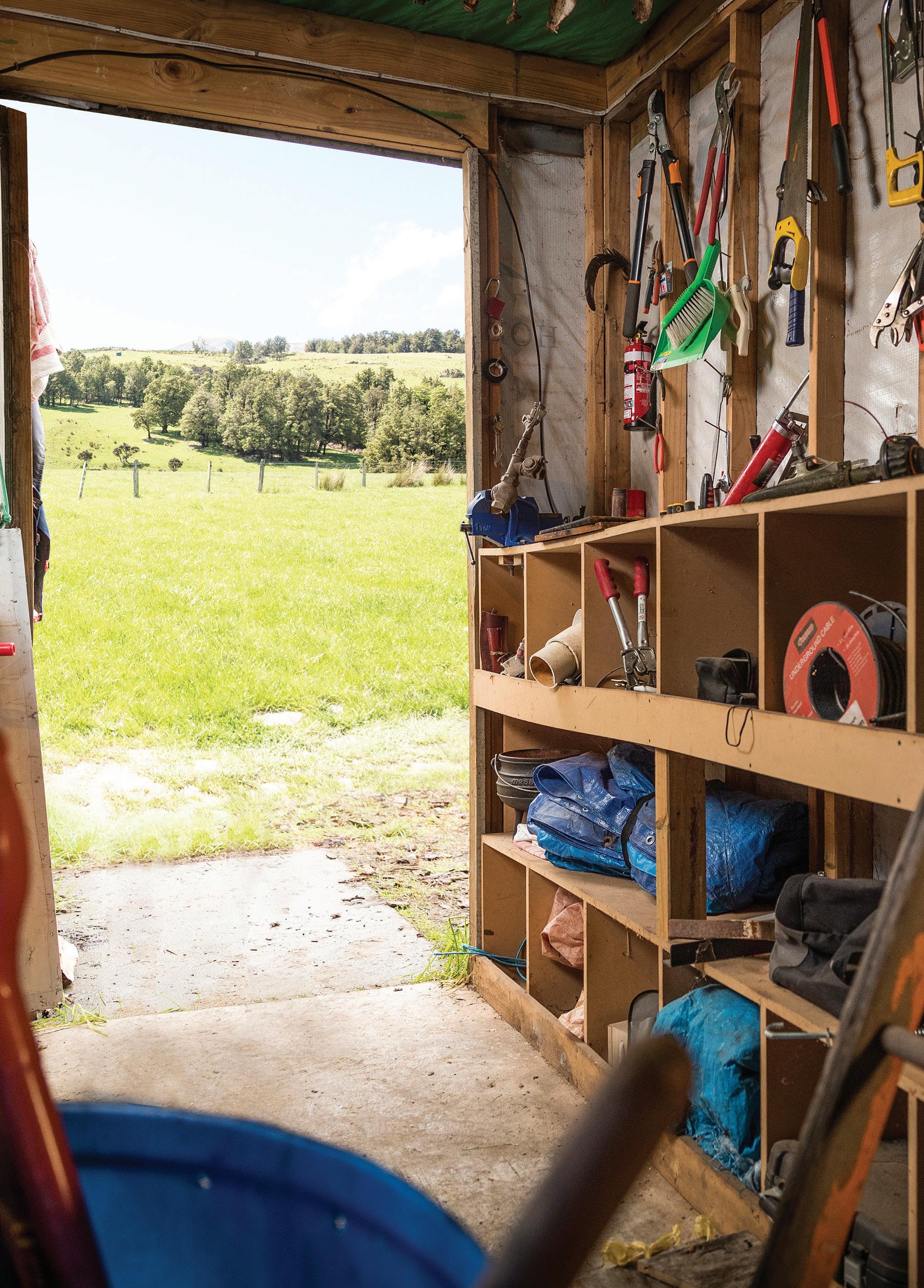
We’re here for the good of the country.


Tuesday 16 th September 2025 at 12pm | 82318 State Highway 2, Pahiatua
YEARLING BULL SALE
Your inspection welcome anytime - BULLS ON VIEW FROM 10am ON SALE DAY -
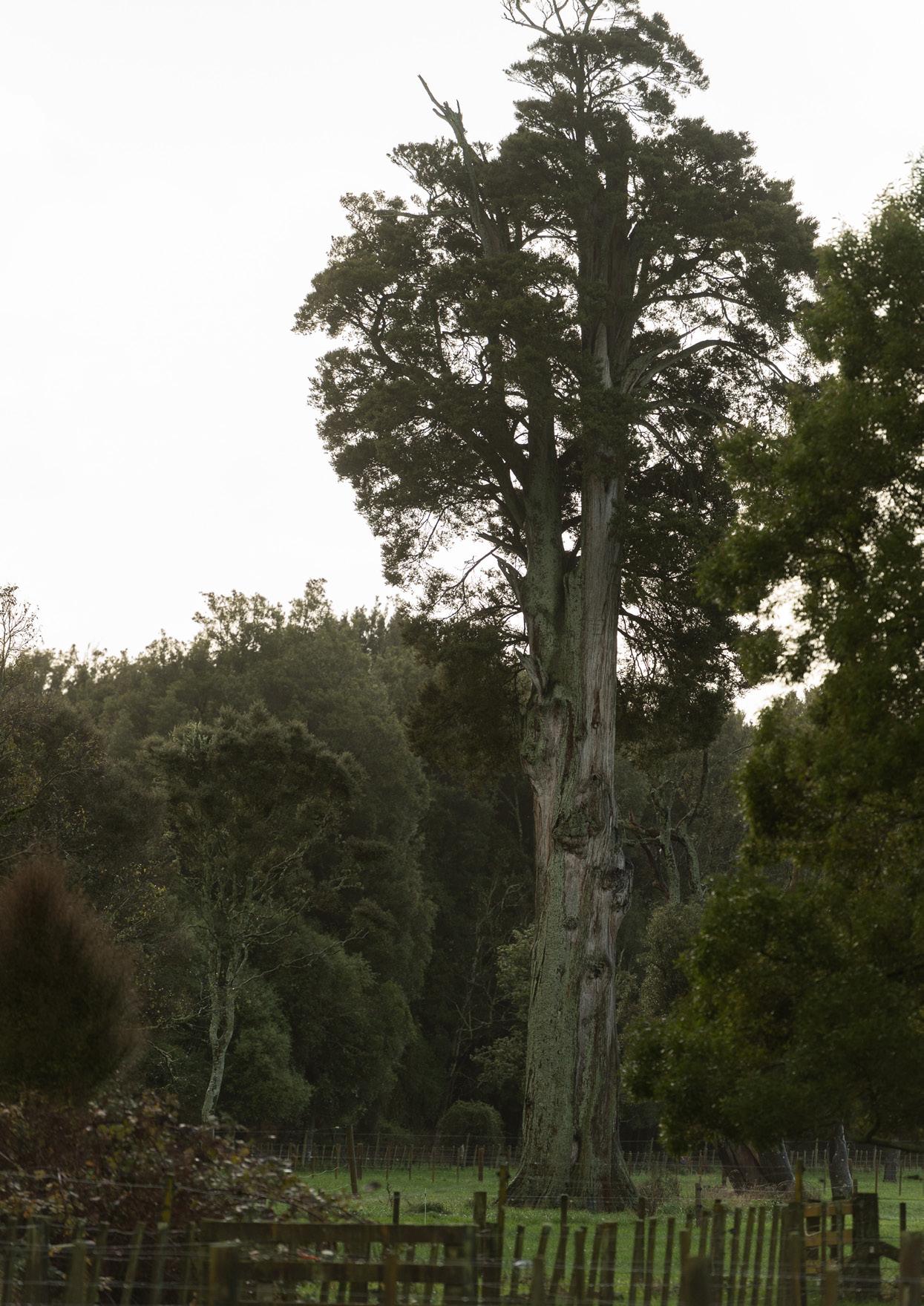
All females and males are i50k tested (breeding values are genomically enhanced), sire verified SV, parent verified PV.
Points to Note: Free Delivery in North Island
T.B. Status – C10.,Totaranui is in an endemic-free area. All bulls have been tested negative and vaccinated for BVD. All bulls freeze branded for identification.
Totaranui Contacts
Daimien Reynolds & Tally Jackson M: 021 430 710
E: bulls@totaranuistud.co.nz
John Jackson 0274 454844
Agent Contacts
PGG Wrightson - Mark Crooks 027 590 1452
Auctioneer and Agents for the sale: PGG Wrightson
Overriding commission of 6% to non participating companies. 75
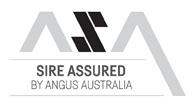
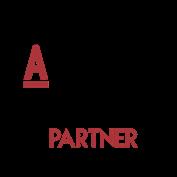


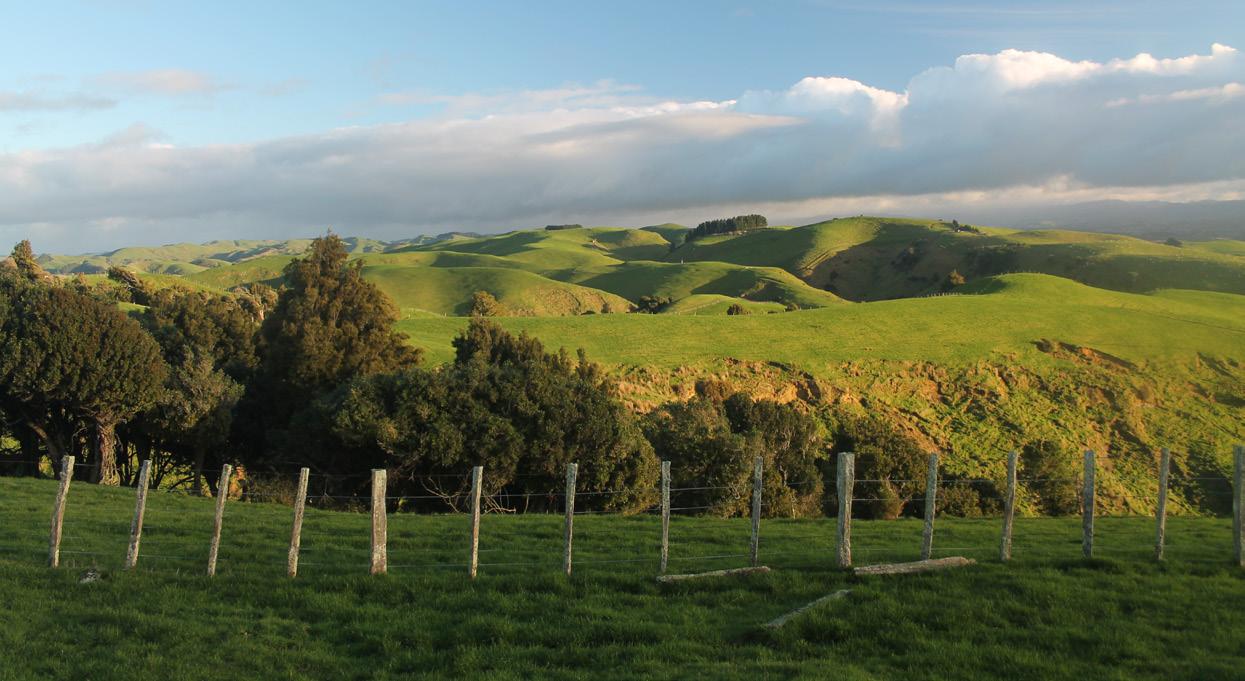
Foreword
Greetings,
Thank you for taking the time to look at our catalogue. There will be a good selection of bulls for sale, with many of these bulls bred to mate heifers, others for mixed age cow mating. With 75 bulls catalogued there will be a bull for everybody. The photo on the cover is a crop I have been interested in for many years but unable to get seed. H and T Agronomics were able to supply me 8 hectares worth and as you can see it is an exciting crop. Bi annual, large volume growth, high ME and no bloat. I’m looking forward to seeing how it goes, but besides all that, I loved the photo and had to include it. I did stock it at a higher rate than the photo suggests!
Mating yearling heifers is an opportunity that in today’s price environment can make a significant effect on the bottom line. It does require growing stock out well, some careful management and close observation at calving. I have provided comments that help in the selection of suitable bulls, but I can not remove all the risk. The ebvs are the best tools we have got, they are only estimates of performance. There are no guarantees, but choice of bull has been shown to be one of the largest determinants of successful outcomes.
We look forward to seeing you on sale day
Regards, Daimien, Tally, John and the rest of the team here at Totaranui.
Why Choose a Totaranui Bull?
• Totaranui has mated yearling heifers for over 3 decades. Calving ease is inherent in our herd.
• All calves are tagged and weighed at birth accurate recording of birth weights.
• All cattle are i50k genomically tested which includes parent verification (a requirement by Angus Australia, not required in NZ). This gives us a level of information for each female as if she has already got up to 13 calves on the ground and it enhances the accuracies of the ebvs.
• Our program has included selection for carcass traits for over 30 years meaning progeny will do well in the recent premium beef programs.
• We deliver our own bulls free of charge within the North Island within 2 weeks of sale.
• The selection pressure at Totaranui is very high. Being predominantly a sheep farm cows are for most of the year…on the back tit.
• AM, NH, CA and DD tested Free or remain Untested Free.
• All bulls have been tested negative and vaccinated for BVD.
Totaranui Philosophy
It’s all about profitability…
It’s no easy life for the Totaranui cow. She spends the hard winter months behind the ewes, cleaning up the pastures, just as the commercial farmer would expect of her.
Totaranui run two separate stud cow herds; one to generate high value A+ two year old bulls and the other to generate low birth weight yearling bulls. Our yearling bulls are not second class citizens, they’re bred specifically for heifer mating in the beef and dairy markets.
While docility and structure are paramount in all our animals, they are now a given as we won’t breed from an unsound animal. Fertility is bred in our herd, so to speak, as we’ve mated all the yearling heifers for over 35 years.
The cows are never given a second chance in this commercial hill country environment. They must calve and rear their calf as a two year old and then get back in calf every year thereafter. Any glitches and she’s down the road, no second chances. This has also had a major contribution to our high fertility.
Profitability is the bottom line and the Totaranui Angus bloodlines grow fast, have a high yield and marbling, and consequently perform well for our clients.
The big shift towards improving carcase and eating quality happened in the early 1990s when John Jackson travelled to the USA on a bull scouting trip with AngusPure’s Guy Sargent and others. John was wholeheartedly behind Guy’s ethos of improving the marbling within grass fed Angus beef here in New Zealand, and set about searching for sires that would increase the IMF and EMA of the Totaranui herd, whilst still maintaining soundness and the mature cow size.
AI enables us to utilise the newest, most progressive genetics available from New Zealand and across the globe’ every year and both John and Daimien still travel to the USA each Autumn, to ensure they can carefully inspect the bulls they’re using in the herd. At Totaranui we’re looking to target the discerning farmer who wants more than just another black bull. The farmer that understands the true benefits of technology and demands more than just a grazing tool to aid his sheep programme.
It’s ultimately about profitability and the progeny from your high performance bulls should contribute more to your bottom line.
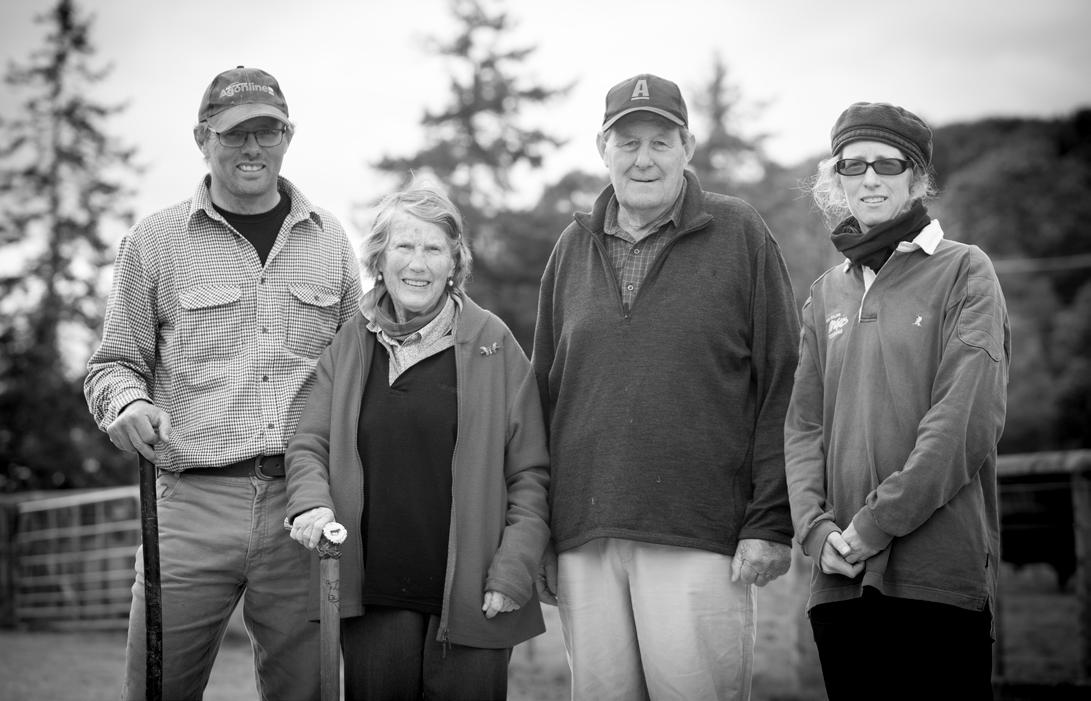

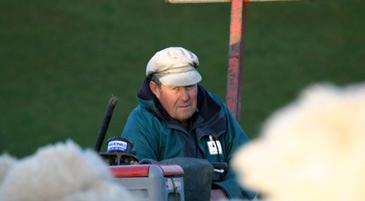
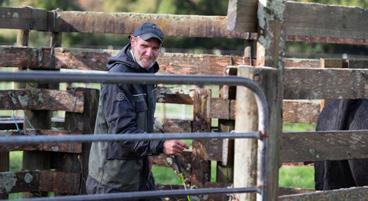
Everyone in the industry knows that profitability within a cattle system can be improved by making educated predictions with factual data. It’s scientifically proven.
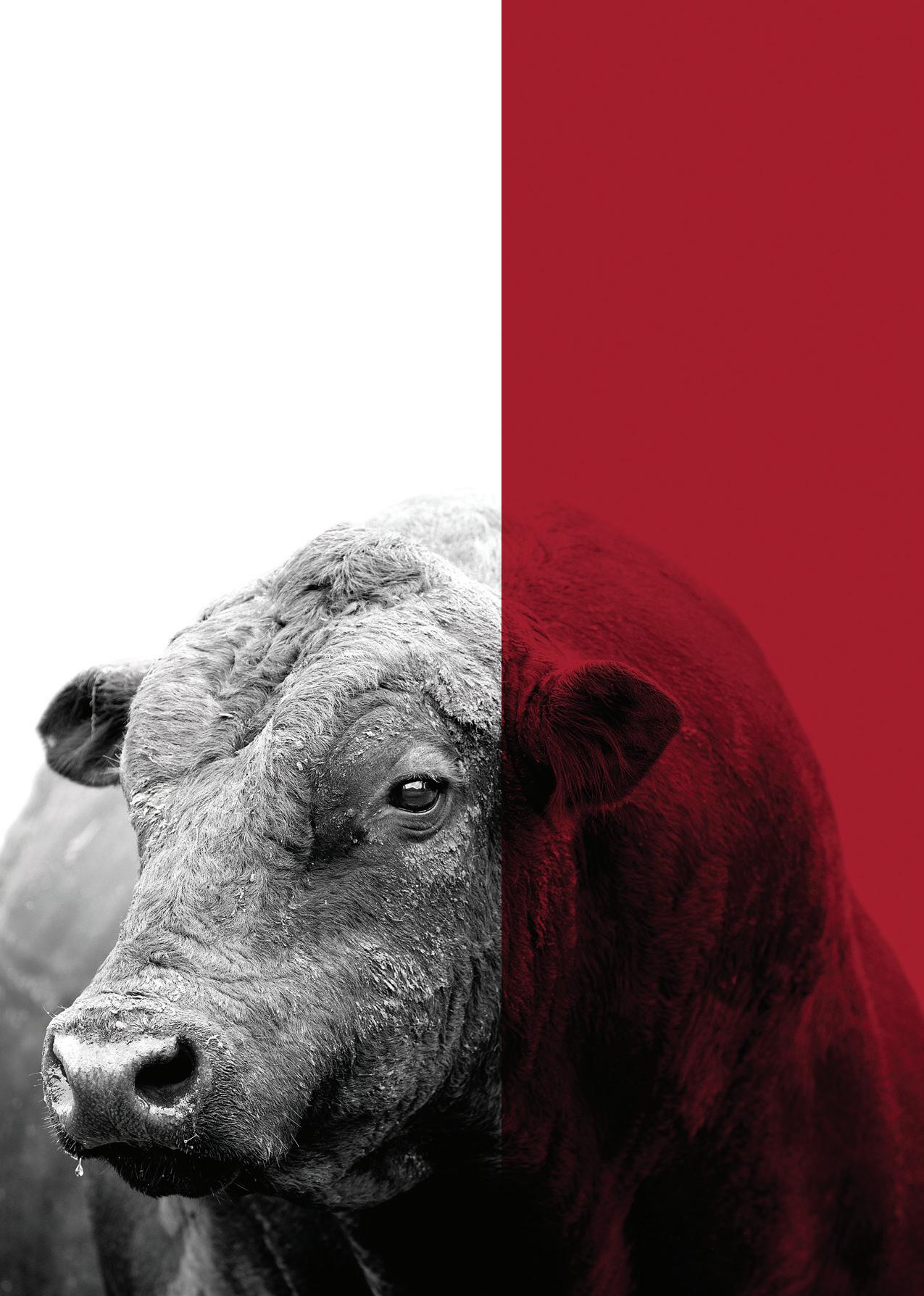
AngusPRO are a group of New Zealand Angus studs that encompass over 40% of New Zealand’s registered Angus cattle. These studs have united and made the shift across the ditch, to join the progressive governing body that is Angus Australia.
Angus Australia pride themselves on their quality of leadership in the delivery of innovative programs that will enhance and promote the value of Angus cattle and beef.
Cleardale
Grampians
Kahurangi
Kakahu
Komako
Lake Farm Genetics
Mount Linton
Ngāputahi
Oranga
Ranui
Rimanui Farms
Rissington
Rotowai
Seven Hills
Stokman
Storth Oaks
Takapoto
Te Mania
The Sisters
Totaranui
Twin Oaks
Vermont
Village Farm
Waitangi
Wakare
Whangara
ANGUSPURE PARTNER
AngusPure NZ has teamed up with 91 Angus studs who share in our vision - to focus on the end consumer. This stud is proud to be named as one of them, and by using the finest genetics and implementing best management practice they can help you produce more premium quality Angus beef.
Only our AngusPure Partner studs display these devices in their sale catalogues. They indicate bulls endorsed by AngusPure NZ.
ANGUSPURE ENDORSED BULLS
AngusPure NZ continues to endorse bulls for sale that are either at or above +$126 for the AngusPure index (API) and at or above $113 for the AngusPRO index ($PRO). These indexes give commercial farmers confidence that by using these selection tools, bulls are most likely to leave progeny with superior carcase quality. At the same time, they achieve desirable outcomes for self-replacing herds, as the AngusPure & AngusPRO indexes still reward cattle with strong maternal attributes like calving ease, scrotal and growth, along with carcase weight.
To qualify, bulls will be => +$126 for AngusPure index OR => +$113 for AngusPRO index
EXTRA ANGUSPURE ENDORSEMENT FOR MARBLING
In addition to the ‘A’, and to assist bull buyers who wish to select for more marbling AngusPure is rewarding those animals that are either at or above +$142 for the AngusPure Index (API) and at or above $128 for the AngusPRO Index ($PRO). In addition to this, they must have an IMF EBV (for marbling) equal to or greater than +2.5. These bulls will be awarded an ‘A+’ endorsement. Marbling is one of the very highest eating quality attributes and is necessary in order to meet some of the highest premium requirements for the export program, AngusPure Special Reserve.
To qualify, bulls will be => +$142 for AngusPure index OR => +$128 for AngusPRO index, and in addition all bulls must be => +2.5 for IMF EBV
AngusPure NZ recognises the need to lift the amount of marbling in our New Zealand cow genetics, in order to fill the requirements of consumers going forward. Marbling has two critical components; genetics and feeding. Feeding on a rising plane of nutrition is vital but without the right genetics, these attributes will not be able to express themselves.
Our Story
AngusPRO are a group of New Zealand Angus studs that encompass over 40% of New Zealand’s registered Angus cattle. These studs have united and made the shift across the ditch, to join the progressive governing body that is Angus Australia. Angus Australia pride themselves on their quality of leadership in the delivery of innovative programs that will enhance and promote the value of Angus cattle and beef.
Everyone in the industry knows that profitability within a cattle system can be improved by making educated predictions with factual data. It’s scientifically proven. While ensuring cattle are of sound structure and are quiet in nature, the additional use of science and genomics can assist in viewing what’s under the skin of an animal, providing an insight into what future progeny will look like, grow like, breed like and essentially, eat like.
By shifting to Angus Australia, AngusPRO have opened the gateway to technological and education facilities for the studs involved and their clients that are second to none. In what may seem like an administrative shift, we’re all gaining a support network of 30-odd staff, countless educational documents and webinars, training sessions, technological tools, extensive research and continuing breed development. And that’s just the tip of the iceberg.
Angus cattle are the backbone of the New Zealand beef industry. In the commercial environment they’re expected to survive. Amid winter conditions of driving rain and inches of snow they will forage and not only survive, they will thrive. It’s in their DNA.
When stud females are mated as heifers, this replicates the commercial farming model and improves overall fertility within the herd. Increased profitability is therefore bred into those progeny, so to speak. EBVs are the best available tool we have in predicting future progeny and when stud breeders use technologies such as HD50k and Angus GS, the accuracy of EBVs and Indexes is increased.
Angus Australia is focused on supporting the genetic improvement of Angus cattle. Their Angus.Tech suite includes a range of software tools and technologies, such as Angus SELECT, which has been developed to support members in improving the profitability of Angus genetics within the beef supply chain, by assisting with the identification of those genetics that are most aligned with their breeding goals and objectives.
While increased profitability for the client is at the forefront of our AngusPRO members’ aspirations, producing the finest grass fed eating experience for the end consumer is absolutely imperative. This is their ultimate focus.
Maintaining high standards of sustainable farming practice to ensure the land is enhanced for generations to come is of course, part of daily life for the AngusPRO team. The environment here in New Zealand must be nurtured, with clear water in the streams and rich soils underfoot. It should go without saying that animal husbandry is paramount. These ideals and quality grass fed Angus beef go hand in hand for the end consumer.
Although we are a newly formed entity, many of the studs represented have stood the test of time. They are the perfect synergy of old school reputability and new school technique.
AngusPRO are committed to bettering Angus cattle within the New Zealand beef industry and ensuring Angus is the tastiest beef on everyone’s lips.
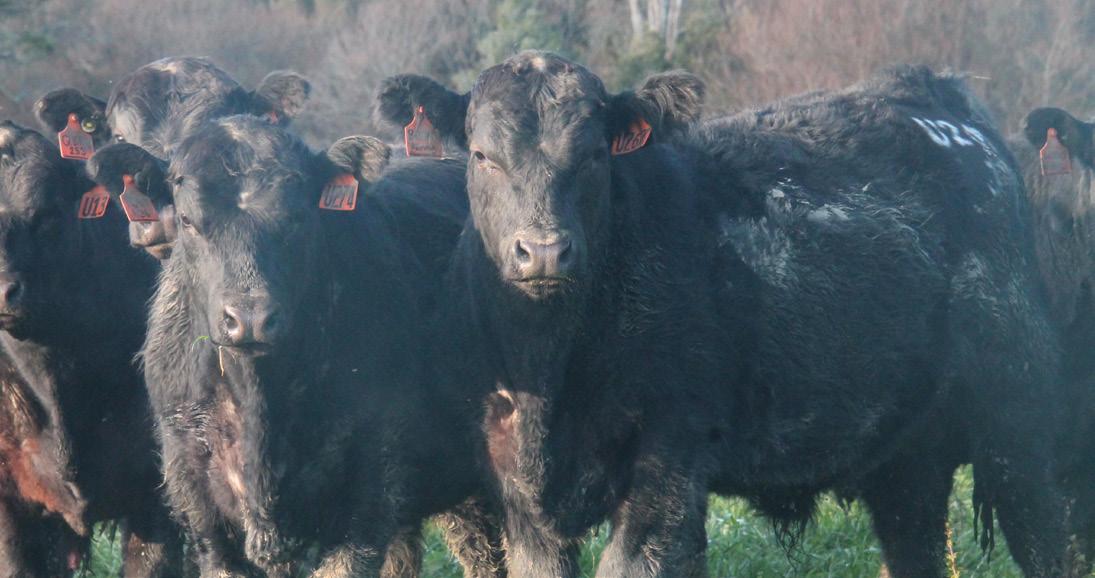

A Guide to Yearling Heifer Mating
Reproduced from the AgLetter, with permission from the team at BakerAg. Contact Ed Harrison to subscribe to the AgLetter, ed@bakerag.co.nz
While it’s nice to see some thumper weaners go out the gate, the fact remains that the number one driver of a cow herd’s profitability is its reproductive performance.
The management of your replacement heifers has a major influence on this, and we know that the better the heifers perform early in life, the more they can be used as a tool later in life.
Successful reproductive performance in a cow herd is weaning 90% to cows mated within a 365-day breeding cycle. As with any system it’s worth ensuring the plan you have in place is giving you the best possible outcome.
Heifer Mating System
• Mating as a yearling isn’t for everyone. On some properties, there just isn’t the feed available to guarantee success year on year.
• Where the farm is set up for it, the returns can be significant. Comparing the same feed profile of yearling mating versus 2yr mating on today’s prices, the additional cattle revenue generated can be north of 20% more.
• On a property with 200 MA cows, this equates to $37,000 which well and truly covers any additional cost (labour, vets, bull, etc).
• The intangible benefits also mean mating heifers can have a positive impact on the lifetime performance of the cow herd. This includes:
1. Greater fertility pressure on the herd. Only heifers that go through puberty early and get in calf early are retained as replacements.
2. It is thought that heifers that go through puberty early have more positive fats. These positive fats have other benefits to the cattle system (carcass traits, restoring body condition).
3. Under the right management, heifers that get in calf early continue to get in calf early as a MA cow.
4. Any non-performers are culled early, speeding up genetic gain.
Liveweight Targets
• To minimise the risk of failure, liveweight targets must be set and regularly monitored. There are no silver bullets, liveweight drives performance.
• This ensures the heifers will hit puberty and are cycling when they are joined with the bull.
• As mature cow weights have shifted over the last 10-20 years, target yearling mating weights have shifted along with them. The consensus now sits at 60% of mature weight for the first mating as a yearling and 85% of mature weight for mating as a 2-yearold.
1. For a 550kg cow this equates to a 330kg LW target (300kg min) when she is mated as a yearling and a 470kg target (450kg min) when she is mated a 2-year-old.
• For most hill country properties weaning a 180kg heifer calf, this requires 60kg of LWG over the autumn and winter (400g/day) and 90kg of LWG in the spring (1kg/day).
• This level of performance requires priority feed (allocated crop, grass rotation, rotated with hoggets, etc.)
Getting in Calf Early
• The value of getting in calf in the first or early in the second cycle cannot be overstated.
• This gives a tight calving spread for ease of management, longer interval to cycle and get back in calf (see post-partum oestrus below), a heavier calf at weaning (more days on earth) and sees the cow stay in the herd longer as she is unlikely to be dry or late.
• To manipulate this process, it is common practice to mate as many heifers as possible that meet the grade (weight and type) and then restrict the mating period to 42 days (2 cycles). Some properties with good history of performance pull this back to 32 days (1½ cycles).
• Top-end performance with a 2-cycle mating interval would be an in-calf rate of greater than 90%. Industry average sits at 84%.
Timing of Mating
• There are two schools of thought on this. Some mate their heifers 20 days before their MA cows, while others mate their heifers on the same date as their MA cows.
• Canvassing farmers, this appears to be about a 50:50 split. Having a vocal advocate for one policy or the other often dictates what the majority in that region do.
• This division of policy is largely centered around the postpartum oestrus period. This is the time it takes for the heifer or cow to cycle again after calving.
• Most research suggests that the period is 40-60 days for MA cows and 60-80 days for heifers.
• When conditions are below optimum (restricted intake, low BCS), this period can be stretched out by up to 60 days.
• This post postpartum oestrus period becomes a crucial number when added to the 280-day calf gestation length.
1. 70 days postpartum oestrus + 280 days gestation = 350 days (inside the 365-day breeding cycle)
2. 100 days postpartum oestrus + 280 days gestation = 380 days (outside the 365-day breeding cycle).
• If a cow’s postpartum oestrus is extended out to 100+ days for successive calvings, the cow becomes a late, then a dry-dry and her time is over.
Mate Earlier
1. To get around the heifer’s longer postpartum oestrus, some farmers adopt the strategy of mating their yearling heifers 20 days earlier than the MA to ensure there is enough time for the 2-year-old heifer to cycle in line with their MA bull date.
Mate Later
1. The contrary view is to mate the yearling heifers on the same date as the MA cows.
2. The view (which is backed up by research) is that for every 1 day later a cow is calved, the postpartum oestrus is also reduced by 1 day (she cycles sooner).
3. This is put down to an increase in pasture quality and quality, longer day length and higher air temperatures.
4. This is the reason that during favourable seasons or with a planned approach, late calving cows can be brought forward again.
5. By mating later, the heifers are heavier and have reached puberty, so they get in calf earlier (more in the first cycle). At the other end, by calving in more optimum conditions, they can shorten up the postpartum oestrus which then lines up the 2-year-old heifers with MA bull date.
• An overarching consideration to the heifer mating date is workload. By mating earlier, the calving period sits in the somewhat quieter period between lambing and docking. Mating later generally lands smack bang in the middle of docking which means you can be calving heifers in the dark.
Feeding at Key Times
• From a weaner to mating as a yearling, the heifer needs priority treatment. Regular weighing needs to occur along the way to track progress.
• Steady and consistent LWG over winter is recommended to ensure the heifer is not compromised early in her life. With specific management areas set up in the spring, yearling heifers can easily achieve growth rates of north of 1kg/day.
• Through mating, the heifer needs to stay on this rising plane of nutrition.
• Post mating, the aim should be to keep the heifer growing at 0.5kg/day through until early winter. This is the most effective way to minimise calving difficulties, as the bigger the heifer, the more in proportion she is to her calf. Restricting the heifer during early stages of pregnancy is unlikely to impact the birthweight of the calf.
• Ensuring this weight is on early also gives a greater chance of the heifer meeting her 2-year-old mating weight target the following year.
• In in the last 50 days before calving, the aim should be for the heifer to maintain her condition, any LWG noticed is the calf growing inside her. It is recommended not to overfeed during this time as excess fat around the birth canal can make calving difficult. The most common strategy is to keep heifers fit on the hills before being brought down to calving blocks.
• Nutrition in the 3 weeks leading up to calving has significant bearing on the postpartum oestrus period. It is important that heifers (and MA cows) do not lose any condition during this time.
• Post calving, the system needs to be set up to ensure the heifer’s feed intake is unrestricted. During this time, she is under a massive amount of pressure as she is lactating, gaining live weight, and going through the physiological change of starting to cycle again.
• Underfeeding at this stage results in the greatest re-breeding failure rates. For this reason, it is crucial that the calving date lines up with the creation of a surplus of feed in the farm system. If this cannot be guaranteed, the calving date needs to be revisited.
Animal Health
• From weaning onward, common practice is drench weaner heifers every 6 weeks through to early winter. One drench is given in the early spring as a yearling and then depending on performance/assessment they can be drenched again in the summer and/or autumn.
• The presence of lice should be monitored, most getting a pour-on coming out of winter.
• Trace elements need to be monitored. Copper is used strategically on most properties and administered either in a bolus or injection form.
• An effective Lepto vaccination policy is required to protect the herd (and yourself). Replacement weaner heifers should be given a sensitiser and booster 6 weeks apart before they are 9 months old. An annual booster in the autumn is recommended for the MA cows.
• The BVD vaccination is required 2 months before mating, with booster given 1 month before mating. It is now common practice for the MA cow herd to receive an annual booster.
• Yard weaning or intensive management and human contact early in the heifer’s life will ensure the heifers stay calmer during calving beats. Calve close to yards and monitor regularly so assistance can be offered quickly. Be prepared to assist with 5% of the line.
Bull Selection
• The recommended bull ratio is 40:1 for 2-year-old or experienced bulls. This number can drop to 25:1 if using yearling bulls.
• Choose a bull specifically bred for calving ease. Any growth rate penalties will be offset by a reduction in calving difficulties.
• Other EBVs to consider:
1. Days to Calving. This is the number of days from the bull going out to calving and rewards animals that calve earlier in the season. The lower the number, the more favorable.
2. Rib Fat. This is the fat depth at the 12/13th rib and rewards animals with more fat. For breeding systems, greater fats can lead to early puberty in heifers and for the MA cow to hold and/or regain condition.
3. Scrotal Size. Measure the scrotal size at 400 days. While this is more of a bull breeders’ tool around serving capacity, it is thought there is a relationship to female fertility and early puberty.
4. Milk. This estimates the animal’s milking ability. While milk drives weaning weight, there is a school of thought that too much milk can have a negative effect on fertility as more energy is put into milk rather than into putting condition on post-calving and restarting cycling.
Bull Testing
It has been found that in most commercial operations, up to 20% of the mixed age bull team is unsound for mating. In single sire mating systems or when there is a defective dominant bull, this can have a massive impact on the herd’s reproductive performance.
Before the bull team goes out, its important you have the confidence the boys are up to the task. Tests should be done in the months leading up to mating so any issues can be identified, and replacement animals sourced.
Capability Test – What’s involved
• A heifer or cow is selected to match the size of the bull and tethered or bailed. In some case she is injected with prostaglandin the day before to bring her on heat.
• The bull is introduced and as he mounts his penis is checked for any abnormalities (injuries, warts, shape, color, length).
• An artificial vagina then steers the bull’s penis away and the semen is collected (the sample needs to be kept at body temperature and away from sunlight).
• The cow or heifer is only served once by each bull and her welfare needs to be assessed along the way.
• During the process, the bull’s ability to mount is evaluated, any structural issues are identified, scrotal size is measured, and temperament is assessed.
• The semen is then sent away for evaluation and detailed quality report is generated based on density, mortality, and deformities (75% alive and normal is a good result). Most vets will offer this service.
Bull Health
• Any small disease or injury can cause a bull to be infertile for a period of time as anything that raises the body temperature can damage sperm.
• Monitor bulls closely during mating to make sure they are doing their job. Check them twice a week and observe them walking, and if possible, watch them mate.
• Treat injured bulls promptly and allow plenty of time for them to recover. Have spare bulls on farm to swap out if one becomes lame or injured.
ANGUSPRO INDEX DEVELOPED SPECIFICALLY FOR THE NEW ZEALAND FARMING SYSTEM AND MARKETS
Selection indexes have been published within the TransTasman Angus Cattle Evaluation for several decades and have made an important contribution to the genetic improvements that have been achieved within the Angus breed during this time.
Selection indexes aid in the selection of animals for use within a breeding program where there are several traits of economic or functional importance by providing an overall “score” of an animal’s genetic value.
Selection indexes are calculated for a specific breeding purpose and are calculated based on weightings placed on individual traits that are deemed to be important for that purpose.
The selection indexes assist in making “balanced” selection decisions, taking into account the relevant attributes of each animal to identify animals with genetics that are most aligned with the breeding objective for the given selection scenario.
The selection indexes published within TransTasman Angus Cattle Evaluation are economic selection indexes and are derived using BreedObject software, as developed by the Animal Genetics & Breeding Unit (AGBU) in Armidale, NSW.
Ten indexes are currently published as part of the TransTasman Angus Cattle Evaluation. Of these, the Angus Breeding and Angus Breeding Low Feed Cost selection indexes are general purpose selection indexes that are suitable for use in the majority of commercial beef operations, while the AngusPRO selection index is specific to New Zealand production systems and beef markets.
AngusPRO Index ($PRO)
Selection Index Summary
• New Zealand production system
• Self replacing herd
• Daughters are retained for breeding
• Steer progeny are finished on pasture for the AngusPure programme
• Steer progeny slaughtered at a carcase weight of 290 kg at 20 months of age
• Significant premium for steers that exhibit superior marbling
The AngusPRO index ($PRO) estimates the genetic differences between animals in net profitability per cow joined in a commercial self-replacing herd based in New Zealand that targets the production of grass finished steers for the AngusPure programme.
Daughters are retained for breeding and therefore female traits are of importance.
Steers are assumed marketed at approximately 530kg live weight (290kg carcase weight with 10mm P8 fat depth) at 20 months of age, with a significant premium for steers that exhibit superior marbling.
Traits Contributions
Figure 1 shows the traits that are considered in the $PRO index, and how much they contribute to the overall balance of the selection index. The larger the segment, the greater the impact on the Selection Index.
Selection Advantage
Figure 2 shows the selection advantage if animals are selected using the $PRO index.
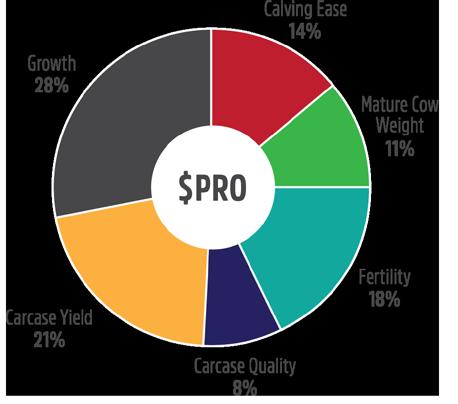
The selection advantage is calculated by ranking well-used sires within the Angus breed on the $PRO index, and comparing the average EBVs of the sires in the highest 10% with the average EBVs of all sires from which they were selected. For example, the sires ranked in the highest 10% based on the $PRO index had 9kg higher 400 Day Weight EBVs and 1.2kg lower Birth Weight EBVs than the average EBVs of the sires from which they were selected. The selection advantage is indicative of the long-term direction and relativity of response that will occur in individual traits if selection is based on the $PRO index. The actual response that is observed will vary depending on the features of the individual breeding program.
A feature of the $PRO index is a selection advantage of close to zero for mature cow weight, meaning that selection on this index will maintain mature cow weight, while still increasing growth to 200, 400 and 600 days of age.

Understanding the TransTasman Angus Cattle Evaluation (TACE)
What is the TransTasman Angus Cattle Evaluation?
The TransTasman Angus Cattle Evaluation is the genetic evaluation program adopted by Angus Australia for Angus and Angus influenced beef cattle. The TransTasman Angus Cattle Evaluation uses Best Linear Unbiased Prediction (BLUP) technology to produce Estimated Breeding Values (EBVs) of recorded cattle for a range of important production traits (e.g. weight, carcase, fertility).
The TransTasman Angus Cattle Evaluation is an international genetic evaluation and includes pedigree, performance and genomic information from the Angus Australia and Angus New Zealand databases, along with selected information from the American and Canadian Angus Associations.
The TransTasman Angus Cattle Evaluation utilises a range of genetic evaluation software, including the internationally recognised BLUPF90 family of programs, and BREEDPLAN® beef genetic evaluation analytical software, as developed by the Animal Genetics and Breeding Unit (AGBU), a joint institute of NSW Agriculture and the University of New England, and Meat and Livestock Australia Limited (MLA).
What is an EBV?
An animal’s breeding value can be defined as its genetic merit for each trait. While it is not possible to determine an animal’s true breeding value, it is possible to estimate it. These estimates of an animal’s true breeding value are called EBVs (Estimated Breeding Values).
EBVs are expressed as the difference between an individual animal’s genetics and a historical genetic level (i.e. group of animals) within the TACE genetic evaluation, and are reported in the units in which the measurements are taken.
Using EBVs to Compare the Genetics of Two Animals
TACE EBVs can be used to estimate the expected difference in the genetics of two animals, with the expected difference equating to half the difference in the EBVs of the animals, all other things being equal (e.g. they are joined to the same animal/s).
For example, a bull with a 200 Day Growth EBV of +60 would be expected to produce progeny that are, on average, 10 kg heavier at 200 days of age than a bull with a 200 Day Growth EBV of +40 kg (i.e. 20
kg difference between the sire’s EBVs, then halved as the sire only contributes half the genetics).
Or similarly, a bull with an IMF EBV of +3.0 would be expected to produce progeny with on average, 1% more intramuscular fat in a 400 kg carcase than a bull with a IMF EBV of +1.0 (i.e. 2% difference between the sire’s EBVs, then halved as the sire only contributes half the genetics).
Using EBVs to Benchmark an Animal’s Genetics with the Breed
EBVs can also be used to benchmark an animal’s genetics relative to the genetics of other Angus or Angus infused animals recorded with Angus Australia. To benchmark an animal’s genetics relative to other Angus animals, an animal’s EBV can be compared to the EBV reference tables, which provide:
• the breed average EBV
• the percentile bands table
The current breed average EBV is listed on the bottom of each page in this publication, while the current EBV reference tables are included at the end of these introductory notes.
For easy reference, the percentile band in which an animal’s EBV ranks is also published in association with the EBV.
Considering Accuracy
An accuracy value is published with each EBV, and is usually displayed as a percentage value immediately below the EBV.
The accuracy value provides an indication of the reliability of the EBV in estimating the animal’s genetics (or true breeding value), and is an indication of the amount of information that has been used in the calculation of the EBV.
EBVs with accuracy values below 50% should be considered as preliminary or of low accuracy, 50-74% as of medium accuracy, 75-90% of medium to high accuracy, and 90% or greater as high accuracy.
Description of TACE EBVs
EBVs are calculated for a range of traits within TACE, covering calving ease, growth, fertility, maternal performance, carcase merit, feed efficiency and structural soundness. A description of each EBV included in this publication is provided on the following page.
UNDERSTANDING ESTIMATED BREEDING VALUES (EBVS)
CEDir % Genetic differences in the ability of a sire’s calves to be born unassisted from 2 year old heifers.
CEDtrs % Genetic differences in the ability of a sire’s daughters to calve unassisted at 2 years of age.
GL days
BW kg
200 Day kg
400 Day kg
600 Day kg
MCH cm
MBC score
MCW kg
Milk kg
DtC days
Genetic differences between animals in the length of time from the date of conception to the birth of the calf.
Genetic differences between animals in calf weight at birth.
Genetic differences between animals in live weight at 200 days of age due to genetics for growth.
Genetic differences between animals in live weight at 400 days of age.
Genetic differences between animals in live weight at 600 days of age.
Genetic differences between animals in the height of mature females.
Genetic differences between animals in the body condition of mature females.
Genetic differences between animals in live weight of cows at 5 years of age.
Genetic differences between animals in live weight at 200 days of age due to the maternal contribution of its dam.
Genetic differences between animals in the time from the start of the joining period (i.e. when the female is introduced to a bull) until subsequent calving.
SS cm Genetic differences between animals in scrotal circumference at 400 days of age.
CWT kg Genetic differences between animals in hot standard carcase weight at 750 days of age.
EMA cm2
Rib Fat mm
Genetic differences between animals in eye muscle area at the 12/13th rib site in a 400 kg carcase.
Higher EBVs indicate fewer calving difficulties in 2 year old heifers.
Higher EBVs indicate fewer calving difficulties in 2 year old heifers.
Lower EBVs indicate shorter gestation length.
Lower EBVs indicate lighter birth weight.
Higher EBVs indicate heavier live weight.
Higher EBVs indicate heavier live weight.
Higher EBVs indicate heavier live weight.
Higher EBVs indicate taller mature females.
Higher EBVs indicate more body condition of mature females.
Higher EBVs indicate heavier mature weight.
Higher EBVs indicate heavier live weight.
Lower EBVs indicate shorter time to calving.
Higher EBVs indicate larger scrotal circumference.
Higher EBVs indicate heavier carcase weight.
Higher EBVs indicate larger eye muscle area.
Genetic differences between animals in fat depth at the 12/13th rib site in a 400 kg carcase. Higher EBVs indicate more fat.
P8 Fat mm Genetic differences between animals in fat depth at the P8 rump site in a 400 kg carcase.
RBY % Genetic differences between animals in boned out saleable meat from a 400 kg carcase.
IMF % Genetic differences between animals in intramuscular fat (marbling) at the 12/13th rib site in a 400 kg carcase.
NFI-F kg/day
Genetic differences between animals in feed intake at a standard weight and rate of weight gain when animals are in a feedlot finishing phase.
Doc % Genetic differences between animals in temperament.
Claw Set score Genetic differences in claw set structure (shape and evenness of claws).
Foot Angle score Genetic differences in foot angle (strength of pastern, depth of heel).
Leg Angle score Genetic differences in rear leg structure when viewed from the side (angle at front of the hock).
$A $
$A-L $
Genetic differences between animals in net profitability per cow joined in a typical commercial self replacing herd using Angus bulls. This selection index is not specific to a particular market end-point, but identifies animals that will improve overall net profitability in the majority of commercial, self replacing, grass and grain finishing beef production systems.
The $A-L index is similar to the $A index but is modelled on a production system where feed is surplus to requirements for the majority of the year, or the cost of supplying additional feed when animal feed requirements increase is low.
While the $A aims to maintain mature cow weight, the $A-L does not aim to limit the increase in mature cow weight as there is minimal cost incurred if the feed maintenance requirements of the female breeding herd increase as a result of selection decisions.
Higher EBVs indicate more fat.
Higher EBVs indicate higher yield.
Higher EBVs indicate more intramuscular fat.
Lower EBVs indicate more feed efficiency.
Higher EBVs indicate better temperament.
Lower EBVs indicate less curl of the claw set.
Lower EBVs indicate more heel depth.
Lower EBVs indicate a less angular leg angle.
Higher selection indexes indicate greater profitability.
Higher selection indexes indicate greater profitability.
Why buy a HD50K-tested bull?
1.
His Breeding Values are very accurate
A young bull that’s been HD50K tested has highly accurate BVs. You can therefore be more confident that his performance will match his figures.
2.
You’ll make faster production gains
The bull you buy this season will influence your herd for the next 8-10 years. By buying an HD50K-tested bull, your decision is based on the best information possible.
3.
Boost the performance of your beef cow herd
If you breed your own heifer replacements, using a HD50K-tested bull means you can tap into “HeiferSELECT®” – a new commercial farmer tool coming soon.
HeiferSELECT® provides the objective information you need to make more accurate decisions about which heifers to “keep or cull”. It draws on maternal, growth and carcass (including marbling) traits.
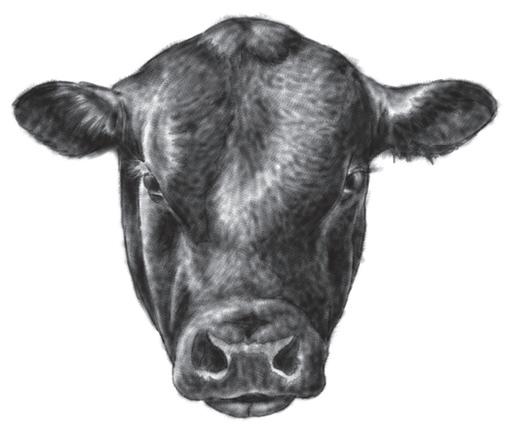
UNMATCHED GENETICS EXPERTISE

Contact your local rep for expert advice.
SIMON SMITH
Lower North Island - Genetics Rep 027 444 0733
TOM SUTTOR
Lower North Island - Genetics Rep 027 446 9967
For more information go to pggwrightson.co.nz/genetics

fb.com/pgwgenetics instagram.com/pgwgenetics
BJORN ANDERSEN
Dannevirke - Area Livestock Manager 027 440 5888
MARK CROOKS
Pahiatua - Livestock Rep 027 590 1452
CAMERON SMITH
Pahiatua / Dannevirke - Livestock Rep 027 446 9963
LARS HARDY
Dannevirke - Livestock Rep 027 289 9872
Health and Safety
Complying with the Health & Safety in Employment Act 1992 and Health & Safety at Work Act 2015 we are required to advise people of possible hazards. Please be aware of these prior to entering the property to ensure your personal safety.
• Cattle can be unpredictable, especially toward children.
• No children under the age of 15 allowed in the inspection yards.
• Move quietly, be vigilant at all times.
• All possible care has been taken in arranging the sale seating but caution in attaining your seat is still necessary.
• Appropriate footwear should be worn.
• There may be slippery surfaces.
• Be aware of vehicles and machinery.
• Please refrain from smoking in and around all buildings.
Condition of Sale
1. The New Zealand Stock and Station Agent’s Association Conditions of Sale and, to the extent deemed relevant by PGG Wrightson Limited (PGW), PGW’s Terms of Sale apply to this sale. When proceeds are credited or a purchase is debited to a PGW monthly credit account, then PGW’s Monthly Account Terms of Trade (as amended from time to time) apply to the extent deemed relevant by PGW. These terms can be inspected at the registration desk and on the wall in the auction room. The current versions of PGW’s Terms of Sale and Monthly Account Terms of Trade are also available online at: www.pggwrightson.co.nz\OurCompany\ Terms-and-Conditions or in hardcopy on request.
2. Each lot is catalogued unless other wise stated. While every effort has been made to ensure accuracy, the auctioneer or vendor will not be held responsible for any errors contained herein.
3. Each lot becomes the property of the purchase at the fall of the hammer.
4. Insurance: Transit and term insurance cover is recommended and can be arranged with the auctioneer on sale day.
5. Purchasers are requested to complete the Purchasers Instruction Slip at the back of this catalogue and hand it to the auctioneer at the completion of the sale.
6. Fertility: The entry of any bull in this catalogue constitutes a Guaranteed of Fertility. Notice of infertility in all cases of such are to be in writing and in the hands of the vendor not later than twelve calendar months from the date the of sale. The purchase price of any bull proved to be infertile shall be refunded without interest, expense, cost or damages. Any disputes will be settled by an arbitrator appointed by the auctioneers. A veterinary surgeon’s certificate shall be produced by the purchase, when required. The purchaser will provide good husbandry.
7. Structure: All yearling bulls will be guaranteed for structure for 12 months after sale date. Studs interested in bulls need to check with the vendor whether bulls of interest are transferable. Purchasers must accept that bulls have not fully grown out, such that a full assessment of their structural potential is not possible, and accept that beyond 12 months, the vendor is not liable for structural problems that may arise. Credits for yearling bulls can only be redeemed at a future yearling sale.
8. Semen for in herd use: Totaranui reserves the right to take semen off any bull sold before delivery for inherd use only.
9. Purchasers Rebate: All intending purchasers must register at the sales office prior to the sale. PGW will pay a purchasing rebate of 6% of the purchase price excluding GST, plus GST, to livestock companies & recognised independent livestock agents with a PGW account who have introduced buyers to PGW before the sale and/or accompanied buyers to the sale.
Looking After your Bull on Arrival
When a bull leaves Totaranui he is leaving the security of a mob, and will arrive in a strange environment at the purchaser’s property. On arrival make sure he has a steer or a cow as a companion, straight away, possibly with a feed of hay, and put them into a good grass paddock.
Young bulls are still growing fast and need enough feed to maintain their growth pattern and be able to settle the cows quickly and efficiently. Respect your bulls, and handle them quietly, walk them rather than rushing them. Treat them with care and in a gentle manner and they will do likewise to you. Totaranui bulls are used to being handled by stockmen on quads or on foot, also with dogs. They treat electric fences with respect. Monitor your bull regularly while out with the cows, as accidents can happen. When the season is finished, your bulls should be drenched and put away with enough feed in front of them. Adequate feed will help stop fighting and help bulls to settle into the bull group. We wish you all the best.

PERCENTILE BANDS TABLE
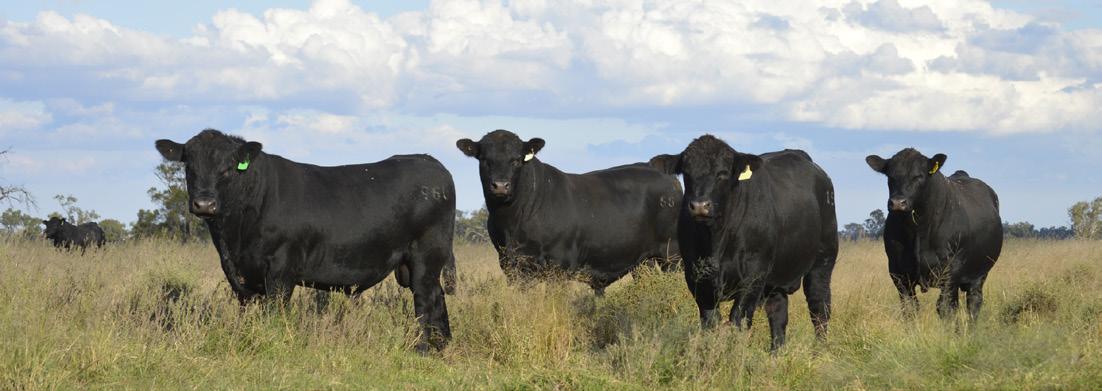

Comments: 32 kgs at birth, heifer’s first calf. His growth reflects his growth ebvs. Not a heifer bull.
TOTARANUI V261 PV
Comments: 37.5 kgs at birth. Calving ease data good but not a reliable heifer bull for yearlings given his birth weight. Fine for 2 year old heifers or mixed age cows. Adequate growth and great IMF. Sire: NGAPUTAHI R160SV

TOTARANUI V205 PV
3 Animal Ident INZ24V205 Date of Birth 28/07/2024
Comments: 32 kgs at birth, by Quarterback who is a good curve bending bull, he has bred consistently for us. Top 10% Calving Ease Direct and Gestation. Good fertility and IMF. Heifer bull with adequate growth outlook and other desirable traits, add benefit to any herd not just heifers.

LAWSONS MOMENTOUS M518PV MURDEDUKE BARUNAH N026PV
TOTARANUI 13004#
Sire: MURDEDUKE QUARTERBACK Q011PV
Dam: TOTARANUI N363PV Purchaser:
TOTARANUI 15211SV

Comments: 39 kgs at birth, dam’s birth weight 36kgs. R160 has possibly put too much strength into this ebv set for this young bull to be a heifer bull over yearlings. Positive Mature Cow Body Condition, and excellent scrotal. Sire: NGAPUTAHI R160SV BALDRIDGE BEAST
TOTARANUI V271 PV
Comments: 38 kgs at birth. Dam 34 kgs, very quiet with a kind eye. This bull’s Calving Ease Direct is in the top 10%. His Birth Weight is still acceptable, top 40%. Can be used over well grown yearling heifers from beef herds or larger framed dairy cows.

Sire: WOODHILL AUTHENTICPV SPRING
TOTARANUI V212 PV
Comments: 36.5 kgs at birth. Dam’s birth weight was 36 kgs, her first calf as a heifer was 25kgs. Her dataset is very tidy for ease of calving. Blended with R160, this bull still has a good ease of calving dataset with good growth, great Mature Cow Body Condition, carcass weight and eye muscle. This could be a heifer bull but over beef heifers or larger framed Dairy. Given his Calving Ease Direct is only in top 30% and his growth potential, caution and observation at calving required.
BALDRIDGE BEAST MODE B074PV
Sire: NGAPUTAHI R160SV
NGAPUTAHI 45#

DIABLO DELUXE 1104PV
Dam: TOTARANUI S678PV
TOTARANUI P438SV

Comments: 36 kgs at birth. Bull for MA cow mating. In the paddock he is showing strong growth against his peers on a daily

Comments: 38 kgs at birth. Out of a medium framed cow. Not for mating yearlings, OK for 2 year olds. Good balanced ebv set, and Mature Cow Body Condition very good. His daily average gain during the winter was ahead of most.
TOTARANUI V022 PV
Comments: 32 kgs at birth. Out of a smaller dam, herself an ease of calving cow. This bull is one that on data gives away growth for ease of calving, but in fact he is growing well, showing his sire’s curve bending performance. Data for calving ease is outstanding. Expect that the growth figures are understated. Mature Cow Body Condition is good, as are fats and docility.
WAITANGI N221SV
Sire: WAITANGI S257PV
WAITANGI N38SV

STOKMAN REAL DEAL N247PV
Dam: TOTARANUI Q617PV Purchaser: $:
TOTARANUI N427#

Comments: 35 kgs at birth. Out of a quiet thick cow. This cross with Poss Winchester has resulted in a powerful heifer bull on data - a great spread of data. Calving Ease Direct is in top 25%. Best suited for beef herds or bigger framed dairy cows.

Comments: 35 kgs at birth. Given dataset, heifer bull with Birth weight in top 10% and Calving Ease Direct in top 12%. Some good carcass traits, and solid growth.
TOTARANUI V019 PV
Comments: 38 kgs at birth, out of a strong ease of calving dam, however, Quarterback has put some growth into the pedigree and pulled back calving ease slightly on this son. Still in top 20% on data, be ok over well grown beef heifers farmed on hill country, but not ideal for people doing heifer mating for the first time, or smaller dairy heifers. Lots to offer MA cows.
LAWSONS MOMENTOUS M518PV
Sire: MURDEDUKE QUARTERBACK Q011PV
MURDEDUKE BARUNAH N026PV

STOKMAN REAL DEAL N247PV
Dam: TOTARANUI Q619PV
TOTARANUI N326#

Comments: 34 kgs at birth. Out of a very nice square and thick cow, her own birth weight 29 kgs. Sire’s birth weight was 30 kgs. This son shows a little more growth potential, so his calving ease data is back. Could be used as a heifer bull but some caution required - well grown beef heifers on hill country rather than small dairy heifers on the flats getting fat during pregnancy.
TOTARANUI
Comments: 38.5 kgs at birth. Out of a larger framed productive cow, 9 progeny. Given a higher birth weight not suitable for yearling mating but could be used over 2 year olds and MA cows. Good growth in ebv set.
TOTARANUI V279 PV
Comments: 37.5 kgs at birth. Out of a quiet dam, calving ease type. This bull however is not a heifer bull, strong growth, carcass weight and EMA are the features of its ebv set.


Sire: EXAR CROSSROADS 1820BPV

Comments: This bull presented quiet in the crate, out of a very quiet dam. By Quarterback, this bull is not a heifer bull but will contribute good growth and carcass. Mature Cow Body Condition in top 50%.
TOTARANUI V308 PV
Comments: 35 kgs at birth. Out of a smaller cow with a calving ease type. Not a heifer bull on data, but a quiet bull with a strong dataset - excellent growth and carcass traits.

TOTARANUI V258 PV
Comments: 36.5 kgs at birth. Out of a calving ease dam, but R160 puts a bit of power into the pedigree meaning this bull may not be a predictable heifer bull over yearlings. Better over 2yo or MA cows. There are 4 top 10 percentile traits in his ebv set, Scrotal, Docility, NFI, and Retail Beef Yield.

BALDRIDGE BEAST MODE B074PV
Sire: NGAPUTAHI R160SV
NGAPUTAHI 45# CONNEALY LEGENDARY 644L# TOTARANUI 13238# Dam: TOTARANUI Q403SV Purchaser:

Comments: Heifer’s first calf, 29 kgs. Dataset suggests good ease of calving. Suitable for heifer mating over beef herd yearlings or larger framed dairy with the normal observation. Given his own birth weight at 29 kgs, Sire’s birth weight at 32 kgs, and his own calving ease direct in top 15%, should be a good heifer bull.
TOTARANUI V335 PV
Comments: 38.5 kgs at birth, out of a nice type bigger framed cow. Dam is not a low birth weight dam, leaving this bull out of that field. Suitable for MA cow mating. Very good outlook for Mature Cow Condition, and good growth out to 600 days, good for self finishers.
TOTARANUI V248 PV
Comments: 29.5 kgs at birth, out of a very quiet dam, her birth weight was very low, 23kgs - gestation 14 days early. This son has a more moderate gestation, still shorter than average, top 35%. His Birth Weight and Direct Calving Ease ebvs are in the top 5%. Adequate growth and very good Mature Cow Condition data, and IMF in top 5% suggests this bull is not only a good heifer bull but also could be a good contributor of quality genetics to any herd.
DIABLO DELUXE 1104PV
Sire: TOTARANUI S215PV
TOTARANUI P447SV


SYDGEN ENHANCESV
Dam: TOTARANUI T603PV Purchaser:
TOTARANUI P457SV

Comments: 35.5 kgs at birth. Out of a fine shouldered cow, she was 28 kgs at birth. Not a bull for yearling heifer mating. Good bull for 2yo mating or MA cows - very sound Mature Cow Condition.
Sire: NGAPUTAHI R160SV
BALDRIDGE BEAST MODE B074PV NGAPUTAHI
V214 PV
Comments: 32 kgs at birth, heifer bull on data at top 15% for Birth Weight and Calving Ease Direct. Growing really well through winter, ahead of the pack on average daily growth, has docility and some good carcass traits. Sire: TOTARANUI T211PV SYDGEN ENHANCESV

TOTARANUI V230 PV
Comments: A Quarterback son. 36 kgs at birth. Dam finer bonedcalving ease type - she was 28kgs at birth. This son’s data shows good calving ease, Calving Ease Direct and Birth Weight in top 33%, suggests suitable for well grown beef heifers or larger framed well grown dairy heifers.
LAWSONS MOMENTOUS M518PV
Sire: MURDEDUKE QUARTERBACK Q011PV
MURDEDUKE BARUNAH N026PV

TOTARANUI N075#
TOTARANUI Q434SV
TOTARANUI N440#
TOTARANUI V203 PV
Comments: Heifer’s first calf, 32 kgs at birth. Out of a smaller type of cow, very nice type. Dam’s bw 35 kgs, sires 34. Could be used as a heifer bull but some caution required - well grown beef heifers on hill country rather than small dairy heifers on the flats getting fat during pregnancy. He also has enough to offer MA cows given his good spread of data, mature cow condition very good, scrotal and carcass traits all quite smart.
TOTARANUI V339 PV
Comments: Heifer’s first calf at 28 kgs. Dam has fine shoulders - calving ease phenotype. This bull is not, on data, a heifer bull for yearlings, but ok for 2 year olds and MA cows. He has good data for MA cows - strong growth, good outlook for mature cow condition, and carcass weight.
TOTARANUI V221 PV
Comments: 32 kgs at birth, heifer’s first calf. Dam has some powerful growth ebvs, so this bull’s data is influenced by that - not a heifer bull for yearlings. Still a useful bull for 2yo heifers or MA cows.



Sire: TOTARANUI T211PV
SYDGEN ENHANCESV TOTARANUI N396# HPCA VERACIOUSPV TOTARANUI M347PV
TOTARANUI T662PV

Comments: 32 kgs at birth, heifer’s first calf. Good calving ease data, suitable for heifers. Top 10% for Birth Weight and top 15% for Calving Ease Direct. Good fertility and some useful carcass traits.
TOTARANUI V361 PV
Comments: 36 kgs at birth. This bull has a dataset very similar to his sire, good calving ease and good growth. His dam’s other calves calved at 30 and 31 kgs. His own birth weight is a bit higher, he is a heifer bull but for well grown heifers.
TOTARANUI V253 PV
Comments: 31 kgs at birth, out of a good type cow, smaller framed. Dataset with calving ease and growth. Very good mature cow body condition outlook. Not a top end heifer bull on data, but data and his birth weight suggest suitable for well grown beef heifers or Friesians.
BALDRIDGE BEAST MODE B074PV
Sire: NGAPUTAHI R160SV
NGAPUTAHI 45#


Q212PV

Comments: 28.5 kgs at birth, out of one of our best cows on type. Heifer bull data OK, the important one to note is Calving Ease Direct at top 31% and Gestation at top 30%. His Birth Weight EBV is back a bit despite his own bw at 28.5, this anomaly driven by his dam’s higher bw ebv - but not excessive. Heifer bull but over beef cows or Friesians to be cautious.

Comments: 34 kgs at birth, out of a first calving heifer. Top 15% for Birth Weight and top 10% for Calving Ease Direct.
TOTARANUI V224 PV
Comments: 30 kgs at birth, out of a dam with calving ease type and data. This bull suitable for heifer mating, calving ease data in top 20% across three key ebvs.
TOTARANUI
BALDRIDGE BEAST MODE B074PV
Sire: NGAPUTAHI R160SV
NGAPUTAHI 45#

TOTARANUI M257#

Comments: Heifer’s first calf, 32 kgs at birth. Strong dataset for heifer mating. Good scrotal and IMF. Sire:

Comments: 2yo heifer’s first calf, 31 kgs at birth. She has inherent calving ease. Both Birth Weight and Calving Ease Direct in top 5%. Some good carcass traits including IMF. Good heifer bull.
TOTARANUI V283 PV
Comments: One of a twin. Heifer bull on data, Birth Weight and Calving Ease Direct ebvs in top 20%. Strong IMF and Carcass Weight. Sire: TOTARANUI R205SV DEER VALLEY WALL STREET#
15233#

N388PV

Comments: 34 kgs at birth, very late born calf so he has done well. Very good dataset for calving ease, use over heifers with confidence based on data. Top 10% except for gestation.

Comments: 27 kgs at birth but was one of a twin. Heifer bull, showing good dataset for ease of calving - with sound growth. Very good carcass weight outlook for progeny finishing.
TOTARANUI V338 PV
Comments: 31 kgs at birth. Cow bull given data despite his own birth weight being quite low. Good growth and carcass traits.

H P C A ZEPHYRSV
Sire: TOTARANUI T304PV
TOTARANUI Q616PV STORTH OAKS P9PV
TOTARANUI Q635SV Dam: TOTARANUI T700PV Purchaser:

Comments: 34 kgs at birth. Good calving ease data set, suitable for heifer mating. Dam also has ease of calving inherent. Strong carcass traits.

Comments: 37 kgs at birth. Dam’s birth weight was 31 kgs. With ease of calving data he qualifies as a heifer bull but for beef herds and straight Friesians - given his own higher actual birth weigh. Sire: DUNOON RECHARGE R102PV
TOTARANUI V317 PV
Comments: 38 kgs at birth, out of a quiet cow. Not for yearling mating, better suited for 2yo mating and MA cows. Good scrotal and IMF.
DEER VALLEY WALL STREET#
Sire: TOTARANUI R205SV
TOTARANUI 15233#

CONNEALY LEGENDARY 644L#
Dam: TOTARANUI Q425SV
TOTARANUI 12118#
Purchaser:

Comments: Heifer’s first calf, 27.5 kgs at birth, out of a low birth weight type cow with top 1% data for Calving Ease. This bull a heifer bull, his own calving ease data as good as mum’s.

Comments: 31 kgs at birth. Out of a thick, quiet and square dam. This bull has good ease of calving data, top 20% bull for three key indicators.
TOTARANUI V263 PV
Comments: Despite data, only a cow bull given his birth weight 40kgs. Good growth outlook for progeny.

Sire: TOTARANUI T288PV H P C A ZEPHYRSV TOTARANUI Q614PV STORTH OAKS P9PV
TOTARANUI Q431SV Dam: TOTARANUI T708PV

Comments: 34.5 kgs at birth. Out of a smaller cow, this bull has a good dataset overall, with very good ease of calving. Very good Birth Weight and Calving Ease Direct . Could be used for heifer mating but has good enough data for any herd’s MA cows.
TOTARANUI V276 PV
Comments: 36 kgs at birth, out of a good old productive cow, still with a good udder. 8 progeny, one each year from 2 year old. Her data is about growth, not calving ease, this bull follows that direction, suitable for mixed age cow mating only.

TOTARANUI V359 PV
Comments: 38 kgs at birth, cow bull on data and birth weight. Mature body condition in top 10%, progeny should hold condition well.

Sire: TOTARANUI S206PV
P304SV
TOTARANUI N381# Purchaser:

Comments: 30 kgs at birth, out of an easy calving dam. Very tidy dataset for heifer mating. Birth Weight and Calving Ease Direct both in
5% and Gestation in top 20%.

Comments: 31 kgs at birth, out of a quiet calving ease cow, she’s got a nice top line and well footed. Very good ease of calving data, but other data also strong enough to benefit most mixed age cow herds, including Mature Cow Body Condition.

Comments: 33.5 kgs at birth. Out of a quiet dam, this bull not suitable for yearling heifer mating. Good 200 day growth for the weaner market.
Sire: TOTARANUI R003PV

Comments: 37 kgs at birth. Not a heifer bull but birth weight suitable for 2yo heifer mating. Reasonable growth.

Comments: 32 kgs at birth. Good bull for 2yo heifers or mixed age cows. Middle of the road data through the dataset, good growth.
TOTARANUI V033 PV
Comments: 35 kgs at birth, bull more suitable for mating 2yo heifers or mixed age cows. Data not good enough for yearling mating, but bull shows good growth potential.
RENNYLEA L508PV
Sire: TOTARANUI P103PV
TOTARANUI 14214SV

TOTARANUI 15023#
TOTARANUI 719# Dam: TOTARANUI N468#

Comments: 34.5 kgs at birth, data suggests good heifer mating option. Out of a smaller cow, quiet. Gives away some growth for top 1 and 2 percent for the key calving ease ebvs.

Comments: 36 kgs at birth, this bull has a good set of calving ease data. Calving Ease Direct in top 25%. Gestation in top 10%. Adequate growth.
TOTARANUI V204 PV
Comments: Heifer bull. 29 kgs at birth, out of a good cow - type wise and calving ease data. This bull’s data shows calving ease with growth. A nice balanced ebv dataset.,

Sire: BALDRIDGE LIMITLESSPV

Comments: 27 kgs at birth, out of a very low birth weight cow. This bull’s Birth Weight and Calving Ease Direct are both in top 1%. Gestation in top 25%. Tidy data for calving ease. Good carcass traits.
V326 PV
Comments: Heifer bull. 30 kgs at birth. Out of a good cow, nice type and quiet with calving ease data herself. This bull has a safe dataset for calving ease. Top 10% across the calving ease ebvs except for gestation - still good at top 20%.
TOTARANUI V345 PV
Comments: 36 kgs. Out of a top cow, nice type and quiet. Dataset suggests a cow bull although could be used over 2 year olds. Could be used over yearlings too in herds that mate yearlings year in year out, again with caution, ie, only well grown out heifers.
DEER VALLEY WALL STREET#
Sire: TOTARANUI R205SV
TOTARANUI 15233#


L204SV

Comments: 27.5 kgs at birth. Out of a very quiet cow, square, good type. Positive dataset for ease of calving, and some useful carcass data. Heifer bull, but not for a herd new to mating heifers.

Comments: Heifer bull. Birth weight 32.5 kgs. Calving ease very good, and growth strong as well. Good carcass traits and over all AngusPro index in top 3%. Later born calf.

Comments: 29 kgs at birth, positive calving ease ebvs with Birth Weight in top 12%. Gives away some growth for calving ease but growth still adequate. Good carcass trait ebvs. Sire: TOTARANUI R003PV
15292E

Comments: 34 kgs at birth, out of a calving ease dam. Heifer bull based on strong data. Calving Ease Direct in top 1%. Birth Weight ebv in top 5%. Gestation not far behind.
V014 PV
Comments: 35 kgs at birth. Out of a good cow with calving ease. This bull’s dataset points toward being a heifer bull, Birth Weight in top 11% and Calving Ease Direct in top 26%. IMF in top 2%. His slightly higher birth weight suggests he should be used over well grown heifers.

TOTARANUI V032 PV
Comments: 31 kgs at birth. Out of a square and thick cow. She has good data including Calving Ease Direct in top 20%. His own calving ease data is very sound, Gestation and Calving Ease Direct in top 5%. Good heifer bull data.
RENNYLEA L508PV
Sire: TOTARANUI P103PV
TOTARANUI 14214SV

TOTARANUI P107PV
TOTARANUI M238# Dam: TOTARANUI R730PV Purchaser:

Comments: MA cow bull. 38.5kgs birth weight. Out of a good type productive cow. Middle of the road calving ease data but Calving Ease Direct points the bull away from heifers. Solid growth and good carcass traits.

Comments: Out of a smaller, very quiet cow. MA cow bull on data. Good growth and Mature Body Condition.
TOTARANUI V003 PV
Comments: Heifer bull. 25.5 kgs at birth. Out of a productive low birth weight cow. Very good calving ease data, Gestation Length in top 1%, Birth Weight not far behind, and Calving Ease Direct top 15%.
Sire: TOTARANUI Q239SV

RENNYLEA L508PV
Sire: TOTARANUI P103PV
TOTARANUI 14214SV TE MANIA 11 553SV TOTARANUI 20# Dam: TOTARANUI 15274SV

Comments: Out of a smaller cow, but thick and square framed. This calf’s birth weight at 30kgs suggests a suitable heifer bull, supported by the data, top 10% for Birth Weight and Calving Ease Direct. Some good carcass data and fertility.

Comments: Heifer bull. 33 kgs at birth. Very good calving ease data, top 5% for Calving Ease Direct and Birth Weight, back a bit on gestation but still in top 25%. Good carcass traits and milk in top 5%.
TOTARANUI V294 PV
Comments: Heifer bull. 28 kgs at birth. Dam a quiet girl, good type. This bull’s calving ease data very good although gestation only at 50th quartile. Birth Weight top 5% and Calving Ease Direct top 20%. Good carcass traits overall.

Sire: TOTARANUI S206PV
P304SV TOTARANUI M071# TOTARANUI 12018E
TOTARANUI P348PV Purchaser:

Comments: Heifer bull. Out of a quiet cow with an ease of calving phenotype, finer boned, lighter. Her data for calving ease in top 10% across the 4 key ebvs. The sire’s data for calving ease also in top 10%. Both sides of the pedigree are very solid for heifer mating. IMF in top 15%.

Comments: 36 kgs at birth. Dam of nice type and easy temperament. This bull not suitable for yearling heifers. He has good growth, quite handy as a bull for mixed age cows.
TOTARANUI V222 PV
Comments: Heifer bull. Good dataset for heifer mating. Birth Weight and Calving Ease Direct ebvs in top 20%. Very good scrotal, and IMF in top 25%.

R408PV
This sale will be hosted by bidr® (bidr.co.nz) as a HYBRID ON-FARM auction, with online bidding and a live-stream available for online purchasers.
All intending online purchasers must register with bidr® using an account held with one of the bidr® partner agencies in advance of the sale date.
The bidr® team is available to assist intending purchasers with signing up and registering – please call 0800 TO BIDR (0800 86 2437), or email enquiries@bidr.co.nz for assistance at any point.
Alternatively, contact your local bidr® representative:
Liam Beattie
General Manager 021 918 554
Olivia Manley
Lower North Island Territory Manager 027 348 6354
Sam Murphy
Lower South Island Territory Manager 027 243 2736
Bruno Santos
Upper North Island Territory Manager 027 221 8276
Mckenzie Alfeld
Upper South Island Territory Manager 027 341 8066
Bianca Perkins
Business Development Coordinator 027 732 0006


To
Reference Sires
BALDRIDGE LIMITLESS PV
Comments: Out of the Baldridge camp, very good on the ground, top weaner growth and out to the hooks, docile and efficient. The growth translates into top echelon carcass weight, resulting in a high indexing bull.
DUNOON RECHARGE R102 PV
Comments: Continuing the line that has had so much impact in Australia and New Zealand, starting with HPCA Intensity, through L519 to this son. High accuracies in his ebvs, curve bending performance.
EXAR CROSSROADS 1820B PV
MURDEDUKE QUARTERBACK
Comments: Combines the paperwork from his sire with the superb maternal qualities from his cow family. His dam has 4 flush sisters still in production in large contemporary groups and his granddam sold to a syndicate of breeders across 3 states in 2020. The cow family is littered with stud sire producing dams and donors. Now with almost 2000 registered progeny in Australia his unique data set makes him one of the breeds most complete all-rounders.
Reference Sires
NGAPUTAHI R160 SV
Comments: A Beastmode foot improver out of a long lived dam. Used to improve type and inject power. Beyond growth, of note is very good scrotal and Mature Body Condition.
POSS WINCHESTER PV
Comments: Winchester is big footed, bold ribbed, and deep bodied with genetic, phenotypic, and maternal merit to be captured in one package.
TOTARANUI P103 PV
Comments: This Totaranui son combines two foundation pedigree lines to form a consistent performer on the low birthweight side of the Totaranui herd. He did plenty of seasons and was a favourite of ours.
TOTARANUI Q239 SV
Comments: A curve bending Totaranui
Reference Sires
TOTARANUI R003 PV
Comments: He was low birth weight and had a body type we liked. He passed on IMF in spades too.
TOTARANUI R205 SV
Comments: A nice type, good growth and calving ease, good carcass traits and good feet, he has bred bulls that have sold well at previous Totaranui yearling sales.
Sire: G
TOTARANUI S021 PV
Comments:
Comments: Calving ease with growth and carcass.
TOTARANUI S033 SV
Reference Sires
TOTARANUI S206 PV
Comments: A Zephyr son going back to GAR Profit. Good body type with ease of calving, good structure and carcass traits.
TOTARANUI P304SV
Traits Observed: GL,BWT,200WT,400WT,600WT,SC,Scan(EMA,Rib,Rump,IMF),Genomics
TOTARANUI S215 PV
Comments: His curve bending data is showing in his progeny. I have been impressed with the sons’ growth against their peers. One thing I liked about the bull himself was his Libido, he had a high work ethic. A strong set of data.
TOTARANUI T211 PV
Comments: Balanced data set and docile. Good ease of calving, adequate growth, carcass, and net feed intake efficient.
Comments: Top 2% on Angus Pro index. Curve bending growthgood ease of calving with top 10% growth out to 600 days. Docile and excellent carcass traits.
Sire: SYDGEN
TOTARANUI T288 PV
Reference Sires
TOTARANUI T304 PV
Comments: Used for his calving ease and growth combination, plus carcass data.
Dam: TOTARANUI Q616PV
TOTARANUI N398#
Traits Observed: GL,BWT,200WT,400WT,SC,Scan(EMA,Rib,Rump,IMF),Genomics
WAITANGI S257 PV
Comments: Top 10% calving ease, good growth, excellent Mature Cow Body Condition, top 1% for AngusPro index. Goes back to Lotto - he did well for us in whatever pedigree he presided.
WOODHILL AUTHENTIC PV
Comments: Authentic offers genuine shape for both internal capacity and muscle expression. He’s deep sided and full through his forerib and flank, and has an outstanding side profile with an attractive front end, level hip, and ideal hind leg set. Good low
WAITANGI N221SV
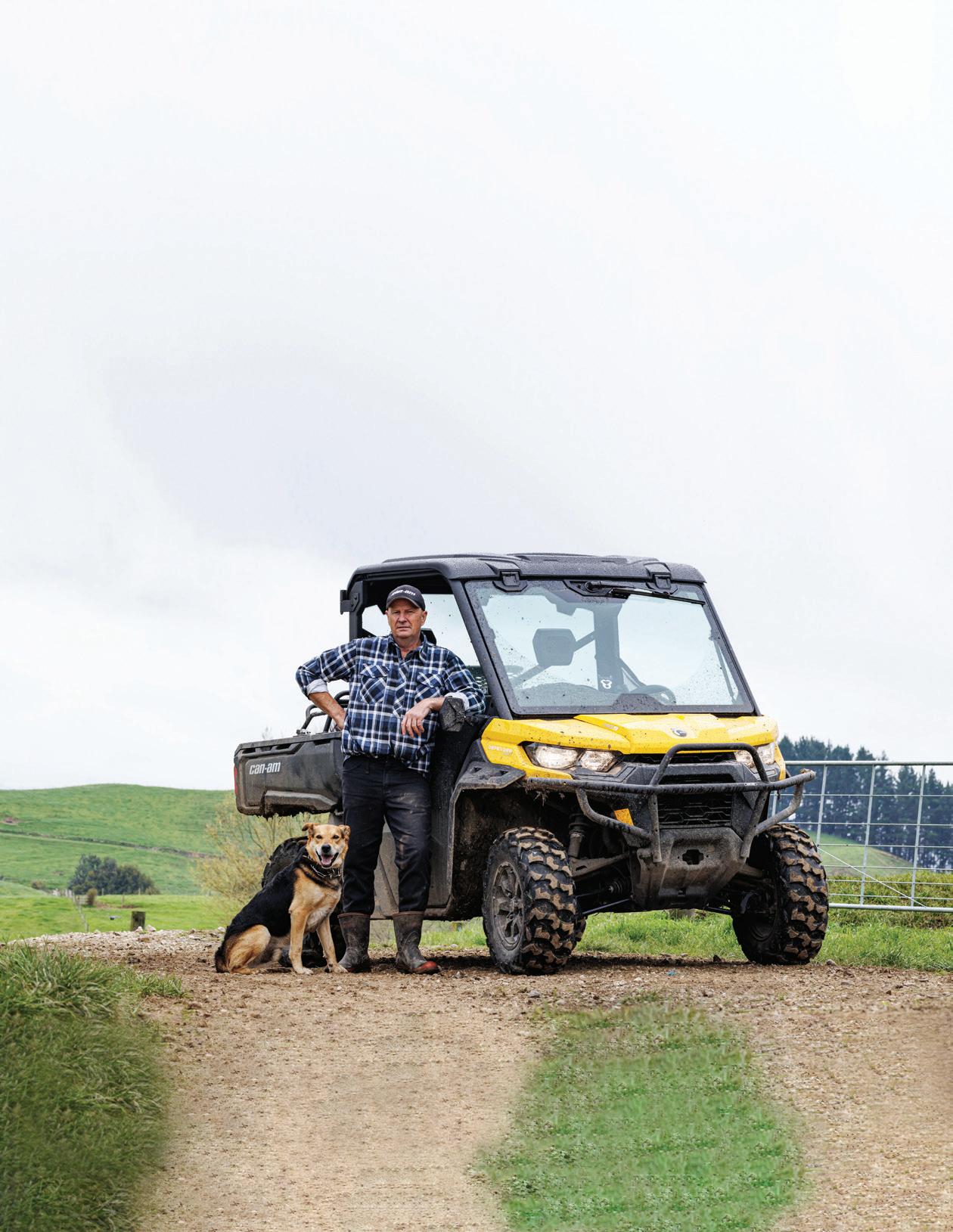
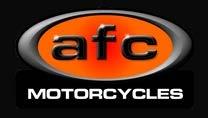



FMG Premier Bull Sale Insurance Form
What is FMG Premier Bull Insurance?
On receiving a completed FMG Premier Bull Sale Insurance form, FMG provides its existing FMG clients with an active policy 14 days free insurance for bulls purchased up to $50,000. For bulls purchased over $50,000, please contact an FMG representative.
What is the length of cover?
Your specified bull(s) will be insured for 14 days once you have fully completed this form and it’s received by an FMG representative. If you would like a longer period of cover, simply tick the Cover extension box below to extend your Premier Bull Insurance to 12 months. The specified bull(s) is then insured for the next 12 months at 7.6% of the purchase price.
FMG will invoice you for this additional cover.
What are the benefits?
Infertility
Theft or death
Vet costs
What will FMG pay?
Cover if your specified bull has to be euthanised due to permanent infertility caused by certain accidents, disease, injury, or illness.
Cover for your specified bull for theft or death caused by certain accidents, disease, injury, or illness (including while in transit anywhere in New Zealand).
Cover up to $500 for treatment of your specified bull to prevent death.
FMG will pay the fair market value of your specified bull, less any amount you receive for the sale of the carcass, up to the amount shown on the insurance certificate.
Apply
Please fill in this form as soon as you have purchased your new bull(s) and hand it to your FMG representative. This form MUST be fully completed and you have to be an existing FMG client with an active policy to be eligible for the 14 days free Premier Bull Sale Insurance.
Purchaser full name:
Purchaser’s address:
Purchaser’s phone:
FMG Account Number:
Purchaser’s email:
Agent arranging insurance on behalf of the purchaser? Provide your full name: Lot: Tag: $ Breed: DOB:
Cover extension
Tick here to extend your Bull Insurance to 12 months @ 7.6% of the purchase price of your bull. This will extend the cover beyond the initial 14 days free cover for the remaining period of 12 months.
NO VERBAL INSTRUCTIONS
WILL BE ACCEPTED Signature of Purchaser or Agent:
Disclaimer
Date: / /
Please note this is only a summary of the product and is subject to our specific product documentation. For full details, you should refer to the policy document. You can get these documents, and any other information you need, from your FMG representative, by calling us or visiting, fmg.co.nz/livestockpolicy
Privacy
FMG is collecting your personal information in order to provide you with the insurance you are requesting. The information is collected and held by FMG, at 292 Church St, Palmerston North. Contact us if you have any questions or concerns, want access to the information we have about you, or you need us to update your information.
Bull Purchaser Instruction Slip
Please complete this slip and hand to the Booking Clerk before leaving the sale.
Purchaser’s full name:
Agents full name and relationship to the owner:
If purchasing on behalf of, what is your relationship to owner?
Buyer No:
Purchaser’s postal address: NAIT No.:
Delivery address: Post Code:
Farm/business name:
Purchaser’s email:
Purchaser’s phone:
Lot: Tag: $ Breed: DOB:
Transport instructions:
Stock firm to be charged:
I acknowledge and agree for my personal information contained in this Purchaser Instruction to be shared between the parties involved in this bull sale, including but not limited to the vendor or their representatives, livestock agencies and transport operators. The information is shared for the purpose of completing the sale and purchase of the bull.
NO VERBAL INSTRUCTIONS WILL BE ACCEPTED Signature of Purchaser or Agent: Date: / /
Hawke’s Bay

